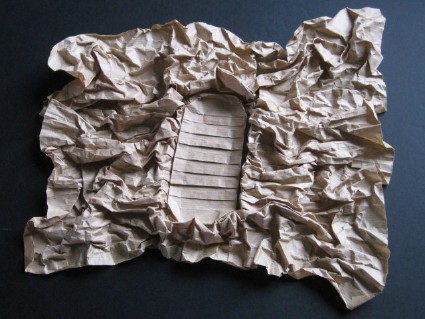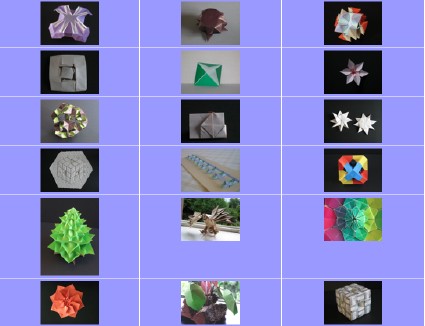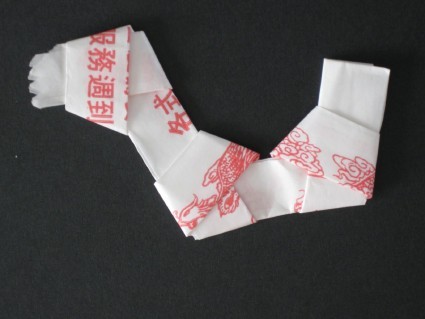
 | Welcome on MOOC-invitation |
|
| New! | An invitation to practice origami | map | Discovery of the world of folding paper From origami to the Art of Folding Paper |
| Back MOOC1 | Journey 2 | Sequence 1 | <--- page 4 | page 5 | page 6---> |
 |
The mathematics of folding paper |
| One must not confuse « origami and mathematics » et « mathematics principles of folding paper » * origami and mathematics Folds are used to make demonstrations or geometrical constructions. Great classics are: - trisection of an angle (impossible to do with rules and compasses, have a look at How to Trisect an Angle with Origami by Numberphile), - Pythagore theorem demonstration ( have a look at An Origami Proof of the Pythagorean Theorem by JSmithatOtterbein), - resolution of degree 3 equations (read in french Résolution par le pliage de l'équation du troisième degré et applications géométriques by Jacques Justin), - the making of pentagonal knots ( have a look at How to Fold a Pentagon and a Hexagon by cutoutfoldup). These mathematical curosities are almost of no use for the so called folding paper, but many other constructions are used daily. Most used are dividing into equal parts, creating regular polygons or contructing particular angles. * mathematics principles of folding paper This concerns the formulation of a folding theory. In 1989, Jacques Justin, a French mathematician, established some axioms describing the possible operation when folding a sheet of paper. Axioms 1 to 6 were rediscovered by Humiaki Huzita in 1991. Koshiro Hatori found again the 7th one in 2001. These seven propositions are known as the axioms of Huzita-Hatori. They are: 1 - Given two distinct points p1 and p2, there is a unique fold that passes through both of them. 2 - Given two distinct points p1 and p2, there is a unique fold that places p1 onto p2. 3 - Given two lines l1 and l2, there is a fold that places l1 onto l2. 4 - Given a point p1 and a line l1, there is a unique fold perpendicular to l1 that passes through point p1. 5 - Given two points p1 and p2 and a line l1, there is a fold that places p1 onto l1 and passes through p2. 6 - Given two points p1 and p2 and two lines l1 and l2, there is a fold that places p1 onto l1 and p2 onto l2. 7 - Given one point p and two lines l1 and l2, there is a fold that places p onto l1 and is perpendicular to l2. Robert J. Lang has proven that this list of axioms completes the axioms of origami. For more details, one can read: - Huzita-Hatori Axioms Wikipedia - Mathématiques et origami origamis de Léa, in french - Les mathématiques de l'origami by Jean-Paul Delahaye, in french Since that time, mathematicians-folders have searched the domain of mathematical foundations of paper folding. For instance, they studied the mathematical pinciples underlying the crease patterns. Amongst great results, one can note the possibility to really fold a CP, the optimisation of a given folds layout or the computation of possible folding sequences corresponding to a crease pattern. Software to help in the design of complex models have been developped (see the page « Computer aided design »). A conference (Origami in Science, Mathematics and Education, OSME) is held roughly every 4 years. It gathers the community of searchers in this domain. Their number grows exponentially, which proves the righness of the domain. The proceedings of this conference have become absolute references for the advanced research in paper folding. |
1 document(s) to download
| mltrisectionangle.pdf | Trisection d'un angle par pliage, 1 page |
1 photo(s)
 Trois nœuds pentagonaux se suivent...
Trois nœuds pentagonaux se suivent... |